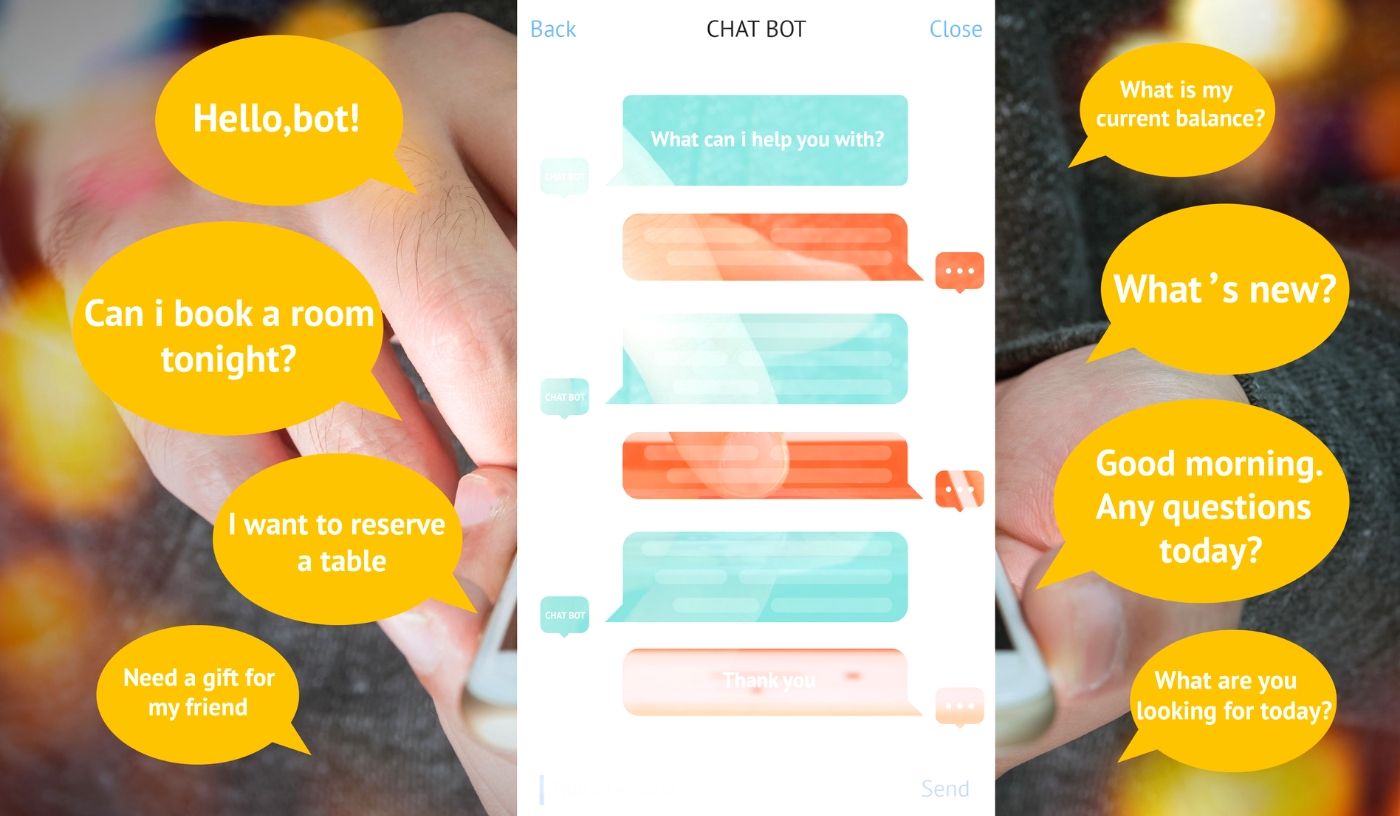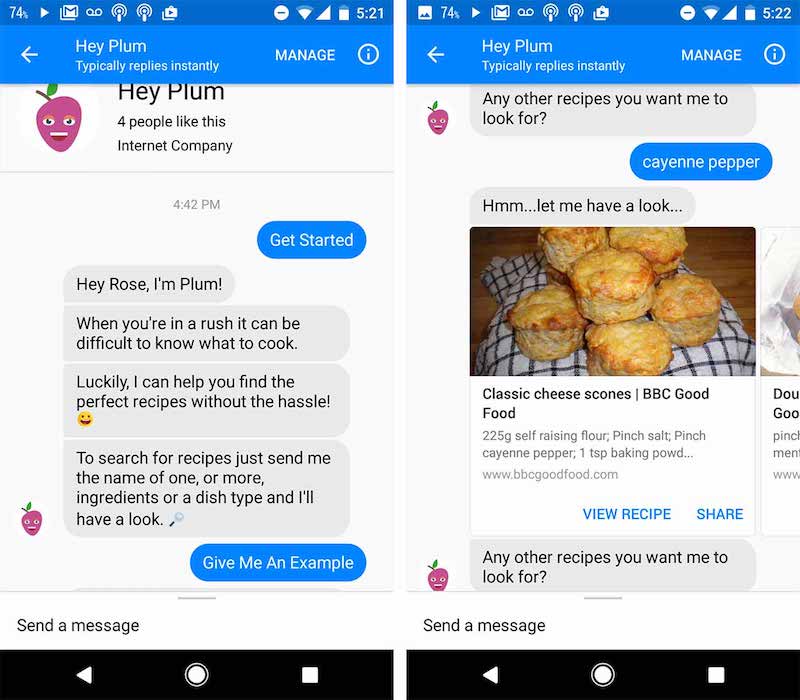Three Real Life Chatbot Use Cases With Analysis

Thousands of chatbots have been developed and released into the wild, but, like most things in life, not all things are created equal. Across the typical chatbot use cases, there are shining examples of what works great and not-so-shining examples of what doesn't work at all.
This post will take a deeper look at three real-life chatbots and analyse what they do well. The goal is to pull out some learning points in how you can design, develop or improve your chatbot.
From making back-office operations more efficient to increasing sales and audience engagement, if you've thought about launching a solution for your brand then these chatbot use cases are worth a read.
Hey Plum
 Source: Mobile Syrup
Source: Mobile Syrup
About the company
Hey Plum is a chatbot using Facebook Messenger that helps people cook up a storm using the ingredients they have on hand.
Their chatbot use case
The goal of the Hey Plum chatbot is to deliver customised cooking recipes and suggestions based on the ingredients you tell it you want to use. The chatbot lives on Facebook Messenger, it asks you a few questions in an easy-to-use conversational manner and sends helpful images and links to recipes for you to follow along.
For those that need further inspiration, the chatbot can list ingredients and, when you see one you fancy, tell it to use it that particular one as a basis for recommending a recipe.
Key learning points
Hey Plum is a good example of a niche chatbot, it does one thing, and does it super-well. If you're thinking about rolling out a solution, then this use case suggests to, at least at first, keep it narrow in scope.
Words are great, and words will get your chatbot functioning. However, Hey Plum demonstrates the power of images to engage a user.
Domino's Pizza

Source: Domino's Pizza
About the company
Founded in 1960, Domino's Pizza is one of the world's leading pizza takeaway brands. With a globally recognised name and an estimated 4.7 billion USD in annual digital sales, it's goal is to deliver hot and freshly made pizzas direct to consumers.
Their chatbot use case
As one of the first brands to adopt artificial intelligence and chatbot technology, Domino's Pizza was quick to leverage the anywhere, anytime nature of Facebook Messenger and a conversational interface.
Users who already have a Domino's Pizza account can use Facebook Messenger to reorder a previously ordered pizza or jump straight into ordering their regular choice (Domino's calls it "Easy Order"). Users can also get timely updates on how their pizza is coming along and track it, from preparation to delivery.
Key learning points
The Domino's Pizza chatbot is one of the few examples of chatbots that can deliver the functionality more commonly seen in traditional downloadable mobile applications. What is interesting is how you cannot go through the more complicated process of choosing a pizza and additional products via the chatbot (like picking a pizza type, customising toppings and adding your favourite dip and some chicken wings). Domino's Pizza uses their chatbot for the more simple conversational interactions and keeps the more complicated things on-site and in-app.
The North Face

Source: VentureBeat
About the company
Founded in 1966, The North Face is a well-known retailer of high-performance climbing and backpacking equipment. Its goal is to maintain an unwavering commitment to pushing the limits of design, so that people can push their limits outdoors.
Their chatbot use case
The North Face haven't used one of the more common messaging applications or pop-up live chat chatbots. Instead, their chatbot use case is based on a simple premise: to help users on their website find the most suitable jacket.
The North Face elected to use IBM's Watson natural language processing technology to understand a consumers travel destination and use case to refine product selection on a personal level. As an example, if a user states they are going to London in the summer and walking outside, they'll get a very different selection than if they were visiting museums in Rome in the winter.
Key learning points
The North Face demonstrated that a chatbot doesn't have to live in Facebook Messenger, which has been the delivery vehicle of choice for the majority of brands. A chatbot and artificial intelligence can be utilised in niche ways within a brand's product range or departments.
Perhaps one of your major business problems is dealing with customer service enquiries; therefore, a North Face style conversational interface embedded on your FAQs page might be the tool for the job.
Conclusion
Ultimately, these three chatbot use cases have shown us that a chatbot is just a tool that solves a problem. The power of a conversational solution is that it can be a conversation that happens across any digital channel, and it can be as simple as two or three questions and answers or a much more convultued conversational process.
It's almost as if the where's and how's aren't what's important, perhaps the first question you should ask yourself is why.












